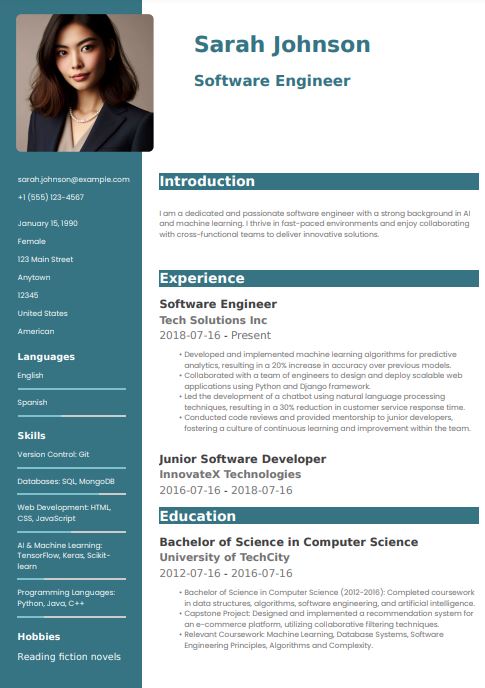Not Hearing Back After Job Applications? Here’s Why and How to Fix It.
Have you ever applied for a job and heard nothing back? It’s frustrating, right? Well, there’s a reason for it, and it often starts with your resume.
Job hunting can be an arduous journey filled with uncertainties, and the lack of response after submitting numerous applications can be disheartening. However, understanding the underlying reasons and learning how to address them can significantly enhance your chances of securing interviews and landing your desired job.
The Problem with Silence
When you submit your application for a job opening, it enters a vast pool of candidates vying for the same position. Hiring managers and recruiters are inundated with resumes, making it challenging to review each one thoroughly. To manage this influx, many companies utilize applicant tracking systems (ATS).
ATS software is designed to automate the initial screening process by scanning resumes for specific keywords, qualifications, and experiences relevant to the job description. Unfortunately, if your resume isn't optimized to meet the criteria set by these systems, it may end up overlooked or discarded, leaving you wondering why you never received a response.
Making an ATS-Friendly Resume
An ATS-friendly resume is essential to ensure that your application gets noticed by human recruiters. Here are some key strategies to optimize your resume for ATS:

- Keep it Simple: Stick to standard fonts and formatting, such as Arial or Times New Roman, and avoid complex layouts or graphical elements that may confuse the ATS.
- Keyword Optimization: Tailor your resume to include relevant keywords and phrases from the job description, ensuring alignment with the requirements of the position.
- Clean Formatting: Use clear headers, bullet points, and concise language to enhance readability and facilitate the ATS's parsing process.
- Quantify Achievements: Whenever possible, quantify your achievements with numbers or percentages to provide concrete evidence of your capabilities.
- Customize for Each Application: Avoid sending out generic resumes. Tailor your resume for each job application to highlight the most relevant skills and experiences.
- Update Regularly: Keep your resume up to date with your latest accomplishments, skills, and experiences to ensure its relevance and effectiveness.
- Seek Feedback: Solicit feedback from peers, mentors, or professional resume writers to identify areas for improvement and enhance the overall quality of your resume.
- Proofread Carefully: Thoroughly proofread your resume for typos, grammatical errors, and inconsistencies to maintain a professional and polished presentation.
- Include Contact Information: Ensure that your contact information, including your phone number and email address, is prominently displayed on your resume to facilitate communication with potential employers.
- Focus on Relevance: Prioritize the most relevant experiences, skills, and accomplishments on your resume to align with the requirements of the job you're applying for and capture the attention of recruiters.
By adhering to these guidelines, you increase the likelihood of your resume making it past the initial screening stage and reaching the hands of human recruiters.
Making a Good-Looking Resume
While an ATS-friendly resume is essential for navigating the initial screening process, a visually appealing resume can captivate the attention of hiring managers and differentiate you from other candidates. Here are some tips for creating an eye-catching resume:

- Visual Elements: Incorporate tasteful colors, icons, and design elements to enhance visual appeal while maintaining professionalism.
- Highlight Achievements: Use metrics, achievements, and awards to showcase your accomplishments and demonstrate your value to potential employers.
- Personal Branding: Include a brief personal summary or branding statement that encapsulates your unique skills, experiences, and career aspirations.
- Consistency: Ensure consistency in formatting, font usage, and spacing throughout your resume to maintain a polished appearance.
- Showcase Relevant Skills: Prioritize the most relevant skills and experiences related to the job you're applying for to make a strong impression on recruiters.
- Use White Space: Incorporate ample white space in your resume layout to improve readability and create a visually appealing design.
- Choose Appropriate Fonts: Select professional fonts that are easy to read and complement your overall resume design.
- Use Bulleted Lists: Organize information using bulleted lists to present key points clearly and concisely, improving comprehension and retention for recruiters.
- Proofread for Consistency: Double-check your resume for consistency in formatting, font sizes, and alignment to ensure a cohesive and professional presentation.
- Seek Design Inspiration: Explore design resources, such as online portfolios and design blogs, to gather inspiration for creating a visually stunning resume that stands out from the crowd.
By striking the right balance between aesthetics and substance, you can create a resume that not only captures attention but also effectively communicates your qualifications and suitability for the job.
The Good and the Bad
Both ATS-friendly and visually appealing resumes have their respective advantages and disadvantages:
- ATS-Friendly:
- Advantages: Higher likelihood of passing initial screening, alignment with ATS requirements.
- Disadvantages: Potential lack of visual appeal, may appear generic.
- Visually Appealing Resume:
- Advantages: Captures attention, showcases personality and creativity.
- Disadvantages: Risk of compatibility issues with ATS, potential distraction from content.
Understanding the strengths and limitations of each resume format empowers you to tailor your approach based on the preferences of prospective employers and the requirements of the job.
Wrap Up
If you're frustrated by the lack of responses to your job applications, it's time to take a closer look at your resume. By optimizing it for both ATS and human readers, you can significantly increase your chances of success in the competitive job market.
Remember, your resume serves as your professional introduction to potential employers. Invest the time and effort to ensure it effectively showcases your qualifications, accomplishments, and aspirations.
Take proactive steps to refine your resume, leverage online resources and tools, and seek feedback from peers or professionals in your industry. With persistence, resilience, and a well-crafted resume, you can navigate the job search process with confidence and ultimately achieve your career goals.
